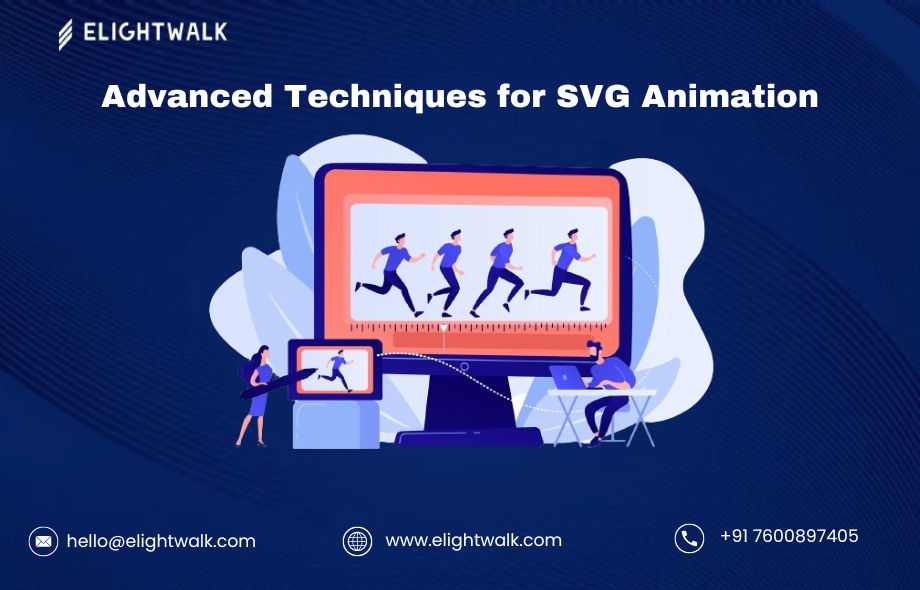Advanced animation techniques become essential as we push the boundaries of Scalable Vector Graphics (SVGs) and seek to create immersive, dynamic visual experiences. These techniques go beyond fundamental transformations and introduce complexity and sophistication to your SVG animations—ExploreLet’s advanced methods to elevate your SVG animations to the next level.
XML Structure:
SVG files begin with an <svg> element, serving as the container for graphic elements. Within this container, various aspects like <rect>, <circle>, and <path> define shapes and components of the graphic.
<svg width=”100″ height=”100″ xmlns=”http://www.w3.org/2000/svg”>
<circle cx=”50″ cy=”50″ r=”40″ fill=”blue” />
</svg>
1. 3D Transformations:
Enhance SVGs with 3D transformations like rotateX, rotateY, and rotateZ to add depth and realism.
@keyframes spin {
from { transform: rotateY(0deg); }
to { transform: rotateY(360deg); }
}
.svg-element {
animation: spin 4s infinite linear;
transform-style: preserve-3d;
}
2. Attributes and Styling:
SVGs support attributes controlling appearance, such as fill for colour and ‘stroke’ for outlining shapes. CSS can style and modify these attributes, creating dynamic visual effects.
<svg width=”100″ height=”100″ xmlns=”http://www.w3.org/2000/svg”>
<rect width=”80″ height=”80″ fill=”yellow” stroke=”black” stroke-width=”2″ />
</svg>
CSS Animation with SVGs:
1. Keyframes and Transitions:
CSS keyframes define stages of animation, enabling smooth transitions between states. Apply keyframes to SVG elements to create fluid motion.
@keyframes moveIn {
from { transform: translateX(-100%); }
to { transform: translateX(0); }
}
.circle {
animation: moveIn 2s ease-out;
}
This CSS animation moves an SVG circle from left to right.
2. Transformations:
Utilize CSS transformations like rotate, scale, and translate to alter SVG elements dynamically. Combine these transformations to create intricate animations.
@keyframes rotateScale {
0% { transform: rotate(0deg) scale(1); }
50% { transform: rotate(180deg) scale(1.5); }
100% { transform: rotate(360deg) scale(1); }
}
.svg-element {
animation: rotateScale 3s infinite linear;
}
@keyframes rotateScale {
0% { transform: rotate(0deg) scale(1); }
50% { transform: rotate(180deg) scale(1.5); }
100% { transform: rotate(360deg) scale(1); }
}
.svg-element {
animation: rotateScale 3s infinite linear;
}
In this example, an SVG element rotates and scales continuously.
3. Interaction and Hover Effects:
CSS hover effects add interactivity to SVGs. Change colors and sizes or apply transformations when users interact with the SVG.
.svg-element:hover {
fill: orange;
transform: scale(1.2);
}
Understanding SVGs and CSS animation sets the stage for creating visually stunning and engaging web content. Whether you’re enhancing static graphics or building interactive interfaces, the combination of SVGs and CSS animation offers a powerful toolset for bringing your designs to life on the digital canvas.
 :
https://www.elightwalk.com/blog/svg-animation
:
https://www.elightwalk.com/blog/svg-animation












